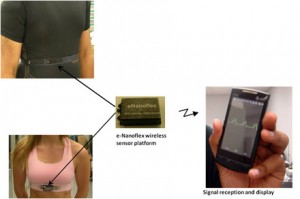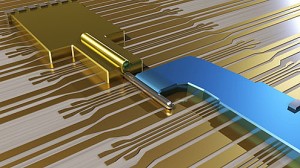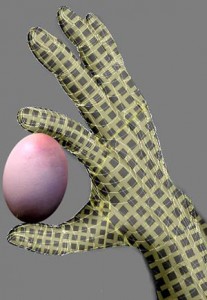In US law (which is based on English common law), there is a presumption of innocence and, so far, there is no information about the Jianyu Huang situation other than a listing of the charges against him and a description of his firing from Sandia National Labs in April 2012.
Here’s some information, from the June 6, 2012 article on the Huffington Post,
A former scientist at Sandia National Labs in New Mexico has pleaded not guilty to charges of stealing research to share with China.
Jianyu Huang was arraigned Tuesday on five counts of federal program fraud and one count of false statements. He is accused of embezzling and sharing information from his position with the lab’s Center for Integrated Nanotechnologies since 2009, according to a federal indictment.
While these are serious charges being laid by the government I want to note that governments don’t always get it right. In my May 18, 2012 posting about an upcoming UNESCO meeting in Vancouver, Canada, Memory of the World, I mentioned a rather extraordinary article written by US law professor, Eric Goldman, where he outlines his indictment of the US government case presented against Megaupload and Kim Dotcom. I gather that there are, at the least, irregularities. I should also note that the Canadian government cooperated and participated in this massive ongoing legal action.
Getting back to the Sandia National Labs situation, Lee Rannals at Red Orbit wrote in his (hers?) June 6, 2012 posting,
 Sandia National Labs said that he did not have access to classified national security information.The lab said that Huang was fired in April for removing a company-owned laptop from the facility.
Sandia National Labs said that he did not have access to classified national security information.The lab said that Huang was fired in April for removing a company-owned laptop from the facility.Sandia is known for its nuclear research, as well as the disposal of the U.S. nuclear weapons program’s hazardous waste. The company is a subsidiary of Lockheed Martin Corporation.
Huang started working on nanotechnology at a Sandia Labs research center that focuses on nanotechnology five years ago.
Alexander Besant’s June 5, 2012 posting on Global Post adds these details,
The Associated Press reported that Huang claimed that nanotechnology belonging to the United States, which funds the Sandia Labs, was his own and that he shared data with state-run schools in China.
He is also being accused of lying about the fact that he brought a lab-owned laptop to China, KRQE reported.
So if I read this correctly, he was fired for bringing the lab-owned laptop to Chine and now he’s being prosecuted for lying about it (the one count of false statements). Meanwhile, he’s charged with five counts of federal program fraud (sharing research data with colleagues in Chinese state-run schools or saying that it was his own and then sharing the data?).
One note, Huang does have a blog on the iMechanica website. His last post was made on March 25, 2012 where he discussed tin and tin dioxide nanowires.



